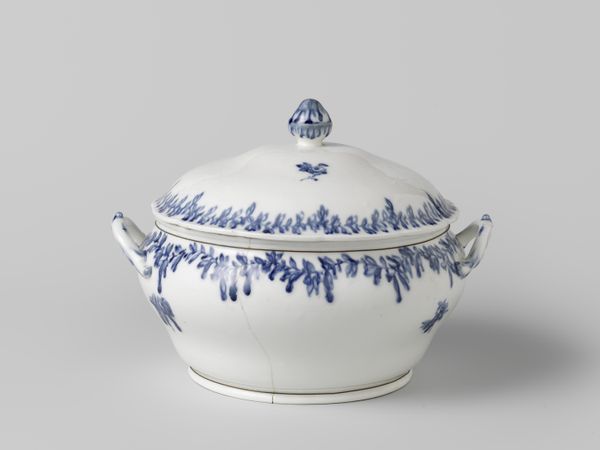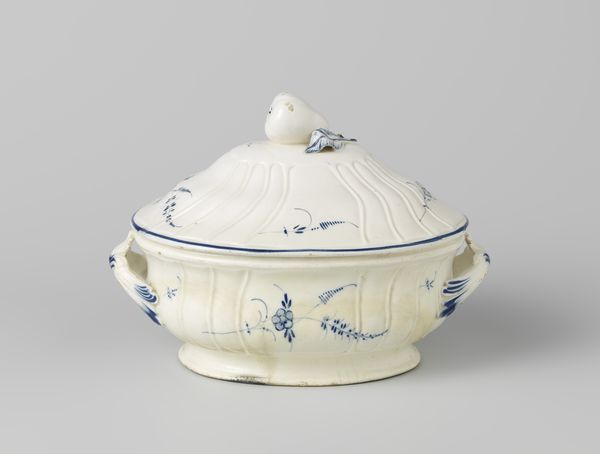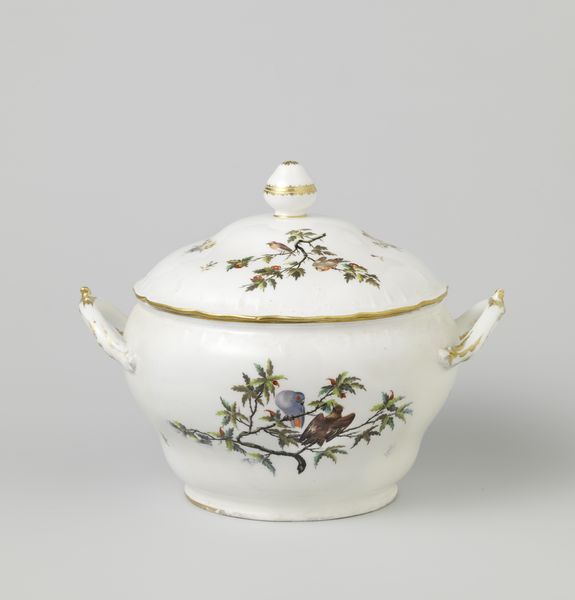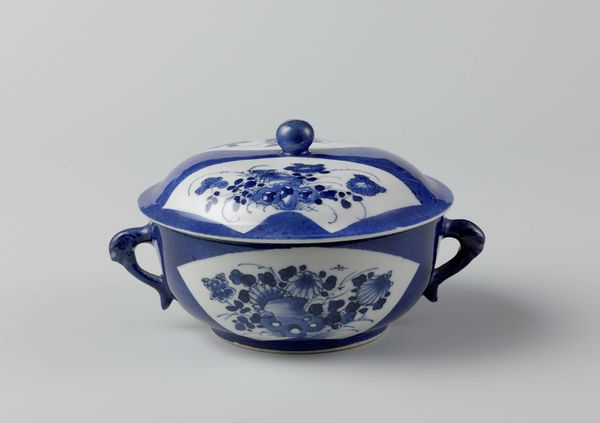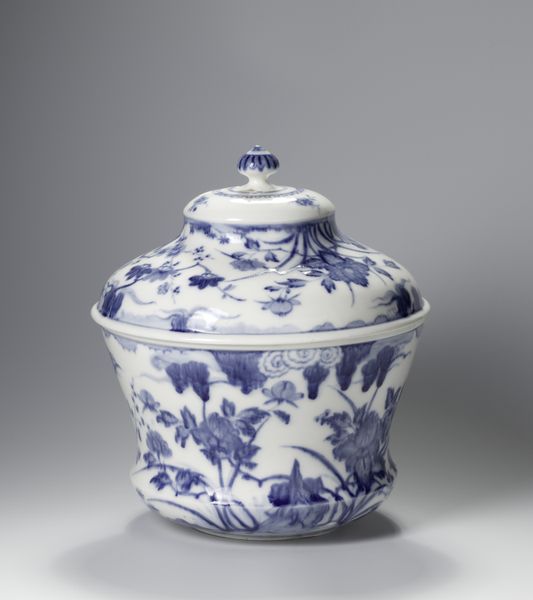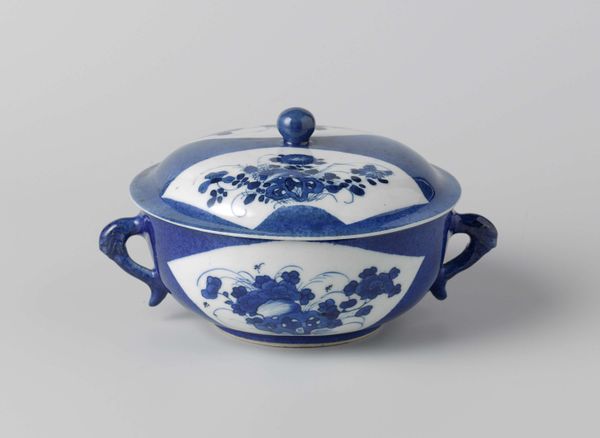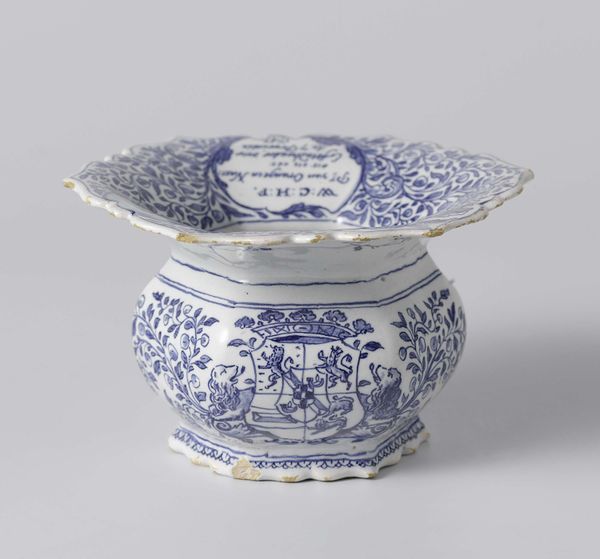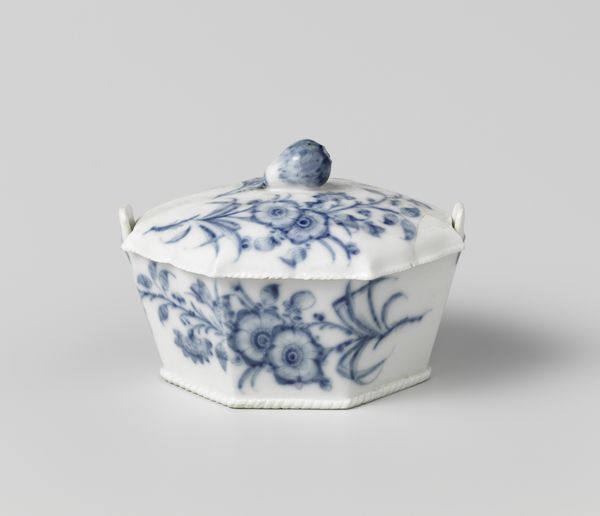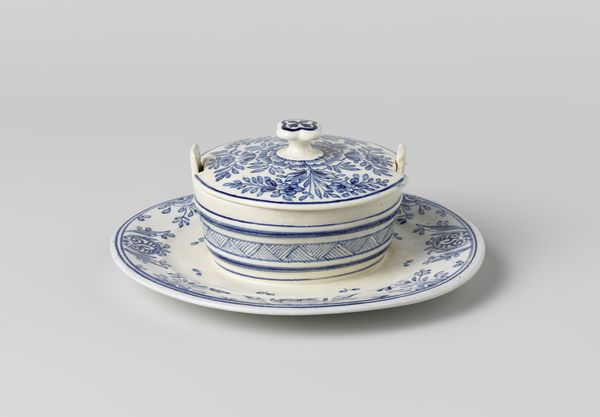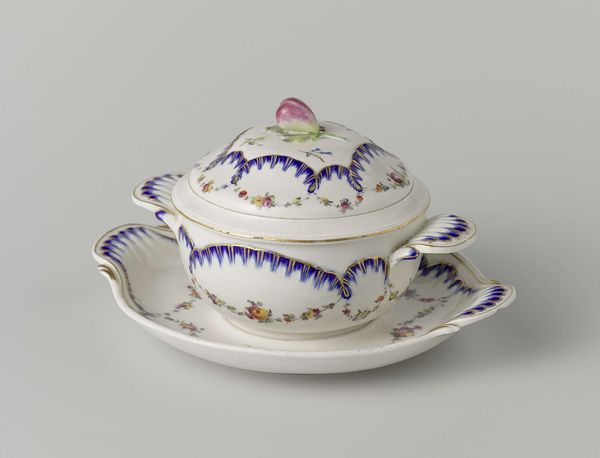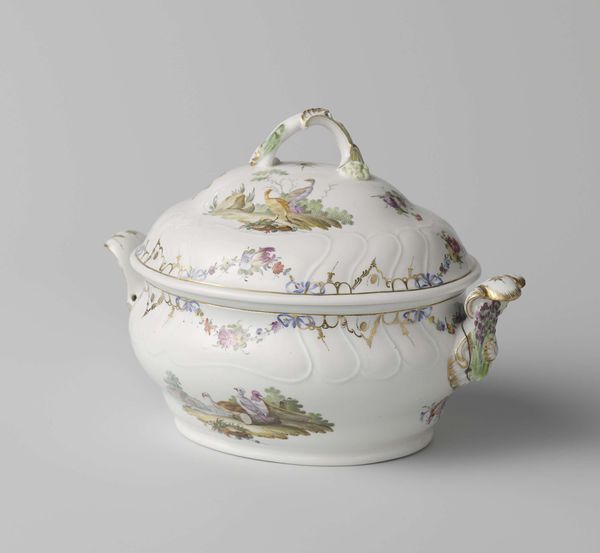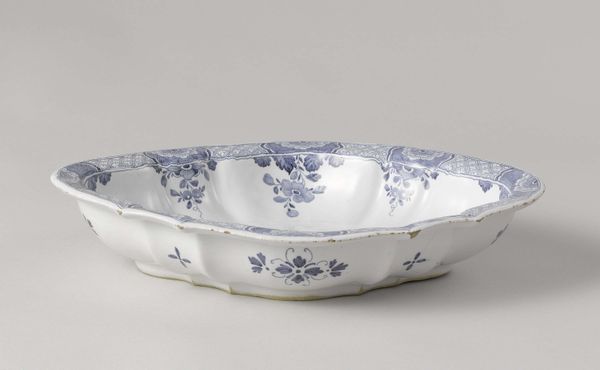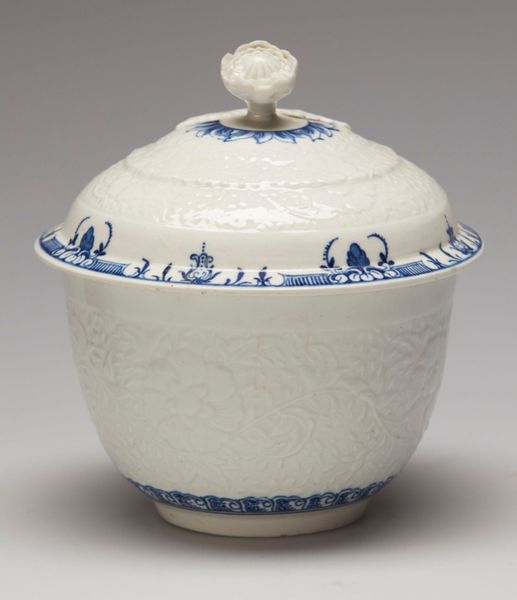
Dimensions: height 10.7 cm, width 30.5 cm, depth 21 cm
Copyright: Rijks Museum: Open Domain
Curator: This object is a covered terrine crafted sometime between 1774 and 1784 in Loosdrecht. The piece currently resides here at the Rijksmuseum. Editor: It strikes me as delicate. The pale, almost watery blue decoration on the bright white stoneware… it's like a visual whisper. Curator: Absolutely. That blue and white porcelain, in the Rococo style, holds a potent symbolic charge. The floral and leafy swags aren't merely decorative, they invoke themes of abundance and natural harmony, concepts heavily favored by the elite in that period. Editor: But that “harmony” was certainly dependent on the extraction of materials, the conditions of the workshops, and the demands of the wealthy commissioners driving the manufacture of objects like these. Think of the cobalt used to achieve that specific shade of blue. Curator: The pigment indeed carries an imperial history. What is compelling here is how it enters into this almost utopian depiction, transforming raw material into idyllic fantasy. It really becomes a projection of desire. Editor: Yes, and by examining its construction we might ask: how was this fantasy created for consumers? These wares spoke to specific rituals around class and consumption. Serving food itself becomes a theatrical display with this sort of ware. Curator: Porcelain like this served as an embodiment of taste and discernment. Owning and displaying a piece like this communicated social aspirations. The symbolism of flora can signal delicate balance, reflecting ideas on societal roles. Editor: And all that symbolism relies on human labor, doesn’t it? From mining the materials to the manufacturing processes—from molding the ceramic to painting the botanical design. Curator: Precisely! That tension is vital. It shows how artifacts materialize beliefs about order and prosperity in sometimes conflicted and compromised ways. I’m left thinking of how this little piece manages to hold all of those associations. Editor: Thinking about that labor—the care that went into crafting it…makes it difficult to dismiss as just another decorative piece.
Comments
No comments
Be the first to comment and join the conversation on the ultimate creative platform.
